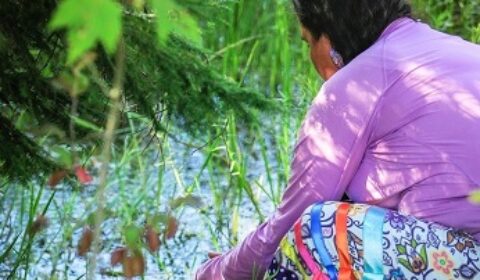FEDS PLEDGE $2 MILLION TO PROTECT 46 AT-RISK SPECIES, INCLUDING TURTLES
GEORGIAN BAY — A project to help conserve habitat vital to the survival of 46 Canadian species at risk — such as the massasauga, the Blanding’s turtle and the midland painted turtle — is getting help from the federal government.
Environment and Climate Change Canada Minister Jonathan Wilkinson announced today that Ottawa will invest $1.95 million over four years in conservation and stewardship efforts across the Eastern Georgian Bay region of Ontario to protect nature and support biodiversity for future generations.
This funding is provided through the Canada Nature Fund’s Community-Nominated Priority Places initiative.
The project — led by the Georgian Bay Biosphere Mnidoo Gamii and co-applicants, including the Shawanaga First Nation, the Magnetawan First Nation, and the Georgian Bay Land
Trust — works to build and nurture the necessary relationships and partnerships to gather data as well as plan and implement actions to address threats to wildlife, such as roads and railroads, invasive plants, and climate change.
“Conserving wildlife habitat is important to supporting our iconic Canadian species at risk,” said Wilkinson in a release.
He said it will continue the-ground work led by the Georgian Bay Biosphere and co-applicants, including the Shawanaga First Nation, the Magnetawan First Nation, and the Georgian Bay Land Trust, showcases what can be achieved for Canada’s biodiversity through collaboration.
“By working together with local communities across the country, we are working toward Canada’s goal of protecting a quarter of our lands and a quarter of our oceans by 2025.”
The work will combine the expertise of each partner to create a shared knowledge base to identify priority species’ habitats.
“We are currently building the tools and strategies needed to protect and steward the high biodiversity within The Thirty Thousand Islands of Georgian Bay. Our success will depend on nurturing long-term collaborative relationships, and this project funding gives us the capacity to do more, do it better, and have a lasting impact on how we govern this UNESCO biosphere landscape together,” said Greg Mason, GM of the Georgian Bay Biosphere Mnidoo Gamii.
“Since time immemorial, the Anishinaabe people of this area have managed the lands and resources, including air and water. Through this connection to the land, we are learning that scientific principles must be based on the traditional knowledge of the original people to further a cohesive partnership among all who walk this earth,” added Sherrill Judge, Maawaanji’iwe (Gets People Together) manager of the Georgian Bay Biosphere Mnidoo Gamii.
“This will enable us to live sustainably and provide protection for all species, both endangered and flourishing. As the human footprint moves to all areas of the earth, we must take into account these species and their habitats. Through this funding, we are moving toward a practical management plan that includes both science and natural law.”
BACKGROUND:
The Georgian Bay Biosphere is the world’s largest freshwater archipelago and was designated a UNESCO biosphere in 2004 for its biodiversity and ecological significance.
More than 1,110 turtle eggs were collected by the Biosphere team and partner organizations ahead of the 2020 culvert-replacement work. Once hatched, the turtles were safely released to their original wetland. The project incorporated Indigenous traditional knowledge in both the project as a whole and in daily work.
Seven new towers along the Eastern Georgian Bay coast track the size, movements, and migration paths of tagged small flying fauna, with the Motus Wildlife Tracking System—a collaborative research network across the Western Hemisphere.
Through this Community-Nominated Priority Places project, a significant amount of time and resources are being devoted to road-focused projects such as road surveys of “hotspots” to identify where snapping turtles, painted turtles and snakes cross and to study techniques to keep their population safe and healthy wherever they are affected by roads.
Through Budget 2018, Ottawa announced $1.35 billion for the Nature Legacy initiative. This amount represents the largest investment in nature conservation in Canadian history.
The Canada Nature Fund’s Community-Nominated Priority Places for Species at Risk is a $15.6 million, four-year funding initiative administered by Environment and Climate Change Canada to support community-led projects that protect and conserve species at risk.
See also:

